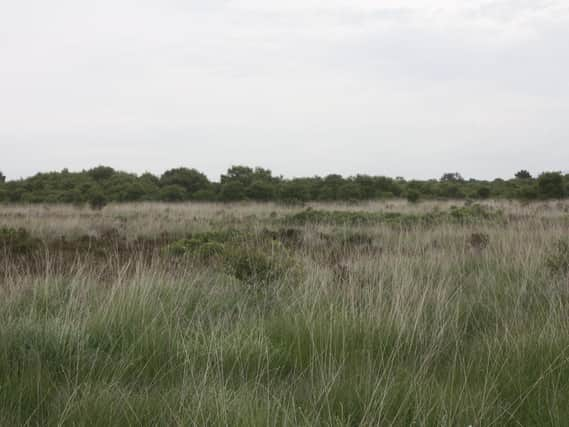Endangered Lancashire peatlands to benefit from £1.1m restoration scheme to tackle climate change


Peatlands are England’s largest natural land-based carbon store, storing the equivalent amount of carbon as found in the forests of the UK, France and Germany combined.
However, it is estimated that only 13 per cent of England’s peatlands are in a near natural state, with degraded peatlands actively emitting carbon into the atmosphere contributing to climate change.
Advertisement
Hide AdAdvertisement
Hide AdNow funding has been secured to restore 16 sites across the North West, including Winmarleigh and Cockerham Mosses near Garstang.
The restoration will requires a combination of hydrological management, to re-wet the peat using combinations of dams and bunding (areas of compressed peat that hold water), and then
revegetating with a mixture of classic peatland plant species such as sphagnum mosses, cotton grass and even the carnivorous sundew.
Members of the Northern Lowland Peatland Coalition, including Lancashire Wildlife Trust, the Great Manchester Wetlands Partnership and Cumbria Wildlife Trust will be undertaking this exciting restoration work.
Advertisement
Hide AdAdvertisement
Hide AdThe latest cash boost comes after the 10-acre Winmarleigh and Cockerham Moss site was chosen to be a key player in a multinational EU (European Union) funded "carbon farming" initiative, which saw a crop of sphagnum moss planted last year.
>>>Click here to read more about the carbon farming idea.
Speaking about the latest funding, Northern Lowland Peatland Coalition Co-ordinator, Lancashire Wildlife Trust’s Sarah Johnson, said: “This funding is great news for our regions’ peatlands. Our lowland peatlands play an important role in climate regulation and when functioning well as a bog can act as a valuable carbon sink, locking potentially harmful carbon away into their peaty soils for millennia.
"However, this internationally rare lowland bog habitat has suffered a dramatic loss with 95 per cent of these peatlands in our region damaged and deteriorating.
Advertisement
Hide AdAdvertisement
Hide Ad"As a result, these areas are emitting millions of tonnes of greenhouse gas emissions each year, with lowland peatlands in the UK being responsible for around 56 per cent of peatland emissions although they only account for 14 per cent of UK peatland land mass.”
Environment Minister, Rebecca Pow said: “Our peatlands are remarkable habitats which provide homes for many precious species and hold enormous amounts of carbon. By restoring 35,000 ha of damaged and degraded peatlands in England, nine million tonnes of carbon dioxide would be prevented from being released by 2050 which would make a significant contribution to combatting the devastating impacts of climate change and biodiversity loss.
“The projects being awarded funding will bring about much-needed peatland restoration across the country. We have committed to triple our historic average annual peat restoration figures and these landscape-scale projects will provide a great contribution to achieving this and accessing the wealth of benefits healthy peatlands offer.”